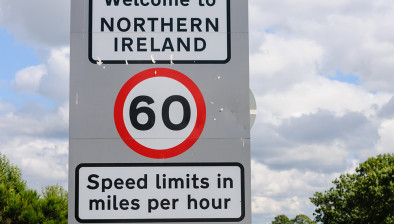NI: High Court: SEELB not negligent over injury to employee on school grounds
A woman who admitted liability and agreed damages at £200,000 for knocking down a school employee while collecting a child on school grounds has failed to prove in the High Court that the South-Eastern Education and Library Board was negligent in its failure to make the road safe for pedestrians.

About this case:
- Judgment:
Background
In November 2013, Ms Ruth Christine Mullen sustained injuries whilst walking on a private access road into her place of work at Bangor Central Nursery School.
Ms Mullen was struck and knocked down by a car driven by Ms Samantha Kerr, who admitted liability and agreed damages at £200,000. Judgment was entered in that amount together with an order for costs in favour of Ms Mullen against Ms Kerr.
In the High Court in Belfast, Ms Kerr brought third party proceedings against the South-Eastern Education and Library Board (SEELB) which owns and occupies the access road.
Legal Principles
Ms Kerr alleged that the design of that road and its associated car parking spaces was negligent in that at the point where the collision occurred there was no segregation between vehicles and pedestrians by the provision either of a raised footpath or by marking out on the road surface an exclusive area for pedestrian use.
Ms Kerr also alleged that the SEELB was in breach of statutory duty in so far as the victim was its employee, and there was a failure to comply with Regulation 17 of the Workplace (Health, Safety and Welfare) Regulations (Northern Ireland) 1993 by failing to organise the workplace in such a way that pedestrians and vehicles could circulate in a safe manner.
Ms Kerr also relied on the SEELB’s failure to carry out a risk assessment under Regulation 3 of the Management of Health and Safety at Work Regulations (NI) 2000.
Employees are owed a duty of care at common law, a statutory duty under the Occupiers’ Liability Act (Northern Ireland) 1957 and also duties under the 1993 and 2000 Regulations
Firstly, the SEELB relied on the fact that there has been no accident or injury in relation to the use of the access road. Justice Stephens cited the well-known formulation in Stokes v Guest, Keen & Nettlefold (Bolts & Nuts) Ltd 1 WLR 1776 , stating that it requires “the employer to have given positive thought for the safety of his workers in the light of what he knows or ought to know”.
Thereafter if there is a recognised and general practice which has been followed for a substantial period in similar circumstances without mishap, the employer is entitled to follow it, unless in the light of common sense or newer knowledge it is clearly bad.
In relation to the Occupiers’ Liability Act (Northern Ireland) 1957 and by section 2(1) the occupier of premises owes to all his visitors the common duty of care, and features the principle that children will be less careful than adults (also featured in the 2000 Regulations).
High Court Discussion
Justice Stephens explained that the road on which the accident occurred was sufficiently wide to allow a footpath to be constructed or to allow for markings to be placed on the road demarcating an area for the exclusive use of pedestrians.
However, the issue was not whether these precautions could be taken but whether:
Firstly, Justice Stephens emphasised that there was very light use of the road by vehicles and overwhelmingly the movement of the vehicles only occurred at very limited times of the day.
In the present case, for an adult this was an ordinary road being walked on by an ordinary person who was well used to the potential for vehicles at the T-junction.
Justice Stephens agreed with Ms Mullen that the layout of the road in the context of the limited number of vehicles in this area and the other precautions taken by the SEELB, posed her as an adult with a risk to her health and safety.
In any event, Justice Stephens was satisfied that the precautions taken in relation to an adult were adequate and that the traffic route was suitable for Ms Mullen. As such, the SEELB was not in breach of its duty to Ms Mullen either at common law, under the Occupiers’ Liability Act (Northern Ireland) 1957, or under Regulation 17 of the 1993 Regulations.
Justice Stephens was further satisfied that Ms Mullen would not have used the layout as suggested by Ms Kerr and the collision would still have occurred even if the suggested layout had been implemented.
In relation to the fact that there was a failure by the SEELB to carry out a risk-assessment in relation to the access road, Justice Stephens said that this should have assessed the risk not only in relation to adults but also in relation to pupils.
Nevertheless, Justice Stephens was not prepared to hold that additional precautions arising from a risk assessment would have included a precaution that would have led to the injury to Ms Mullen being avoided.
In the circumstances, the failure to carry out a risk assessment was not indirectly causative of the injury to Ms Mullen.







